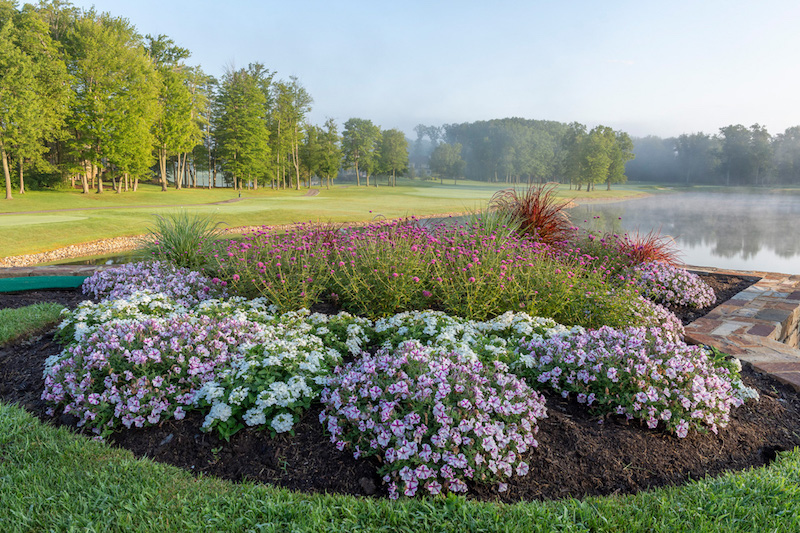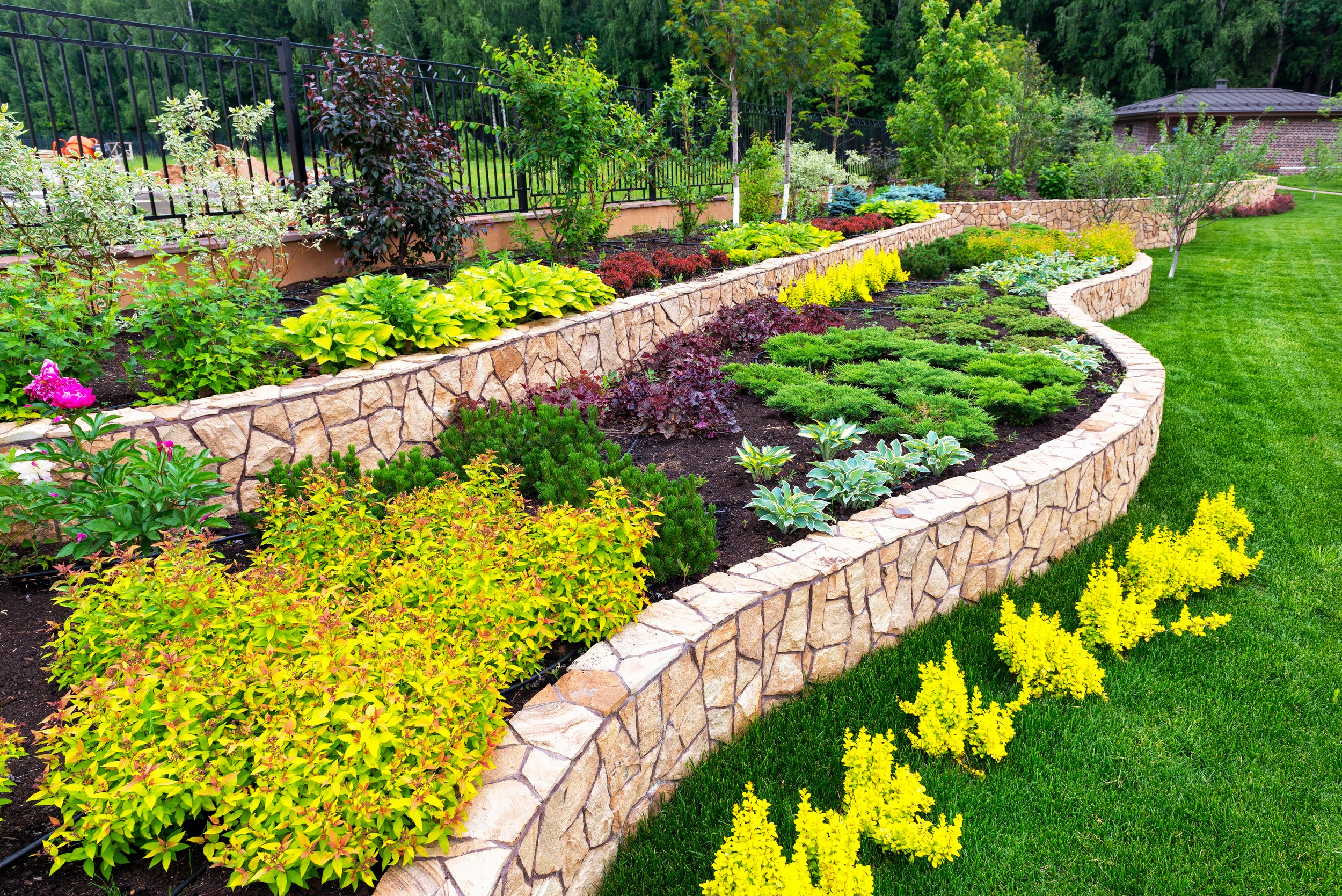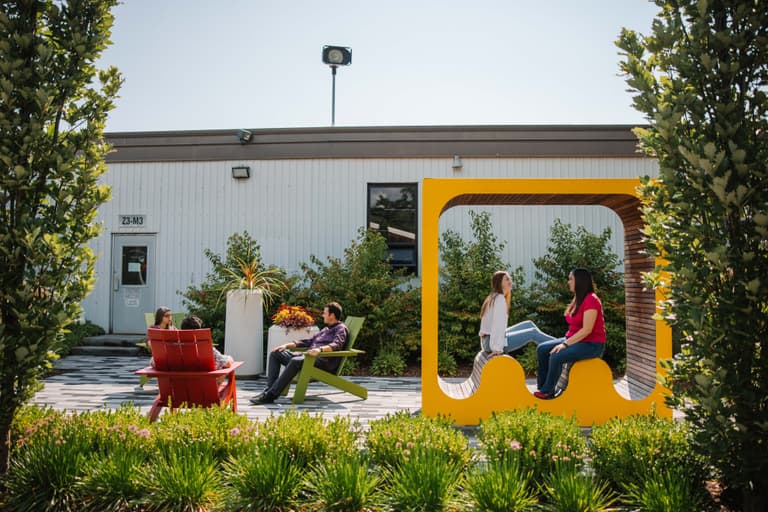The Definitive Guide to Hilton Head Landscapes
The Definitive Guide to Hilton Head Landscapes
Blog Article
Rumored Buzz on Hilton Head Landscapes
Table of ContentsThe Ultimate Guide To Hilton Head LandscapesHilton Head Landscapes Can Be Fun For AnyoneHilton Head Landscapes Can Be Fun For EveryoneExcitement About Hilton Head LandscapesWhat Does Hilton Head Landscapes Mean?Hilton Head Landscapes - QuestionsThe Hilton Head Landscapes IdeasTop Guidelines Of Hilton Head Landscapes
Form compatibility is also a significant part of unity in designone or more noticeably various types are great for contrast and emphasis, but generally all other kinds need to have some resemblances for a linked appearance. Structure refers to how crude or great the surface of the plant or hardscape product feels and/or looks.
Instances of plants with rugged structure include philodendrons, agaves, bromeliads, hollies, palms, and hydrangeas. Hardscape with coarse texture consists of rough-cut stone, rough-finished brick, and incomplete wood with knots and a raised grain. Matured or old building and construction material that keeps a weather-beaten surface area is commonly rugged in texture. Features that produce fine texture consist of small vegetation; slim, strappy leaves (grasses) or high, thin stems; little, dense branches and small branches; long stems (creeping plants); and small, fragile flowers.
The 6-Minute Rule for Hilton Head Landscapes
A lot of plants are average texture, because they can not be called having either crude or fine texture. They are identified by medium-sized fallen leaves with straightforward forms and smooth sides. The average-sized branches are not densely spaced neither commonly spaced, and the total form is normally rounded or mounding. Medium-textured plants function as a history to web link and link the crude- and fine-textured plants.

To make a room really feel smaller sized, position the coarse appearances along the external border and the great textures closest to the visitor. The information of the coarse structure makes the plants appear closer and makes the space really feel smaller. The perceived appearance of plants can likewise change with the distance from the plant.
A Biased View of Hilton Head Landscapes
Vibrant colors raise the contrast and make the appearance show up coarser, while soft shades can squash structure. Hardscape with a rugged texturesuch as really rough rocks and vibrant, large timberstends to make all plant material appear much more average distinctive. Developers often create a texture research study (Number 8) theoretically to aid make a decision the setup of plant materials.
Figure 8. Structure research study. Shade in plant product and hardscape includes passion and variety to the landscape. Color is one of the most conspicuous component in the landscape and is normally the emphasis of many homeowners; nevertheless, it is also one of the most momentary aspect, generally lasting just a couple of weeks a year for private plants.
See This Report on Hilton Head Landscapes
A simple description of the color wheel includes the 3 key shades of red, blue, and yellow; the three second shades (a mix of 2 primaries) of eco-friendly, orange, and violet; and six tertiary shades (a mix of one surrounding key and second shade), such as red-orange. Color theory clarifies the relationship of colors per other and how they ought to be made use of in a structure.

Similar (sometimes called harmonious) color pattern are any three to five colors that are adjacent on the shade wheel, such as red, red-orange, orange, yellow-orange, and yellow, or blue, blue-violet, and violet (bluffton landscaping). The shades are related to every other due to the fact that they generally include 2 main shades blended to create a second and 2 tertiary shades, which suggests they share usual residential properties
Complementary shades are typically discovered naturally in blossoms; an usual set is yellow and violet. Color is discovered in the flowers, foliage, bark, and fruit of plants.
Hilton Head Landscapes - The Facts
Eco-friendly vegetation in all its numerous shades is the dominant shade by quantity, but other shades capture focus much more readily as a result of their high contrast to the color green. Shade is also located in buildings, rocks, pavers, timber, and furnishings. Many shades in natural products, such as stone and timber, are commonly muted and have a tendency to be variations of brown, tan, and light yellow.
Color is a crucial aspect for producing interest and variety in the landscape. Shades have residential properties that can influence feelings, spatial understanding, light high quality, balance, and emphasis. One residential property of shade is explained loved one to temperaturecolors seem trendy or cozy and can influence feelings or feelings. Great shades have a tendency to be soothing and ought to be utilized in locations for relaxation and tranquility.
Getting My Hilton Head Landscapes To Work
The "temperature level" of shades can also influence the perception of range. Cool colors often visit this website tend to recede and are viewed as being further away, making a room feel larger. Cozy shades tend to breakthrough and are perceived as being better, making a room feel smaller. Shade can additionally be utilized to capture interest and straight sights.
For example, brilliant yellow, which has the greatest strength, additionally has a high comparison with all various other shades (typically explained as a "pop" of shade) and need to be conserved. A percentage of extreme shade has as much aesthetic weight as a large amount of a more restrained or weak shade.
Analogous (in some cases called harmonious) color design are any kind of 3 to five colors that are surrounding on the shade wheel, such as red, red-orange, orange, yellow-orange, and yellow, or blue, blue-violet, and violet. The shades are associated to each other due to the fact that they generally include 2 key shades mixed to form a secondary and two tertiary shades, which suggests they share usual homes.
What Does Hilton Head Landscapes Mean?
Complementary shades are frequently located naturally in flowers; an usual pair is yellow and violet. Shade is found in the flowers, vegetation, bark, and fruit of plants.
Eco-friendly vegetation in all its various shades is the dominant shade by quantity, yet other colors record interest quicker because of their high comparison to the shade eco-friendly - landscapers in bluffton sc - https://h1tnhdlndscps.wordpress.com/2024/07/03/transform-your-outdoor-space-with-hilton-head-landscapers/. Shade is additionally located in buildings, rocks, pavers, timber, and furnishings. Many colors in all-natural materials, such as rock and wood, are generally muted and often tend to be variations of brownish, tan, and pale yellow
Examine This Report about Hilton Head Landscapes
Shades have residential or commercial properties that can affect emotions, spatial assumption, light high quality, balance, and emphasis. Great shades often tend to be soothing and should be made use of in locations for relaxation and peacefulness.
The "temperature" of shades can additionally impact the perception of distance. Trendy shades tend to decline and are regarded as being farther away, making an area really feel larger. Warm colors often tend to development and are perceived as being better, making an area feel smaller sized. Shade can likewise be utilized to capture focus and direct sights.
For instance, bright yellow, which has the highest intensity, additionally has a high contrast with all various other colors (frequently called a "pop" of color) and need to be conserved. A little amount of extreme shade has as much aesthetic weight as a large amount of a much more restrained or weak shade.
Report this page